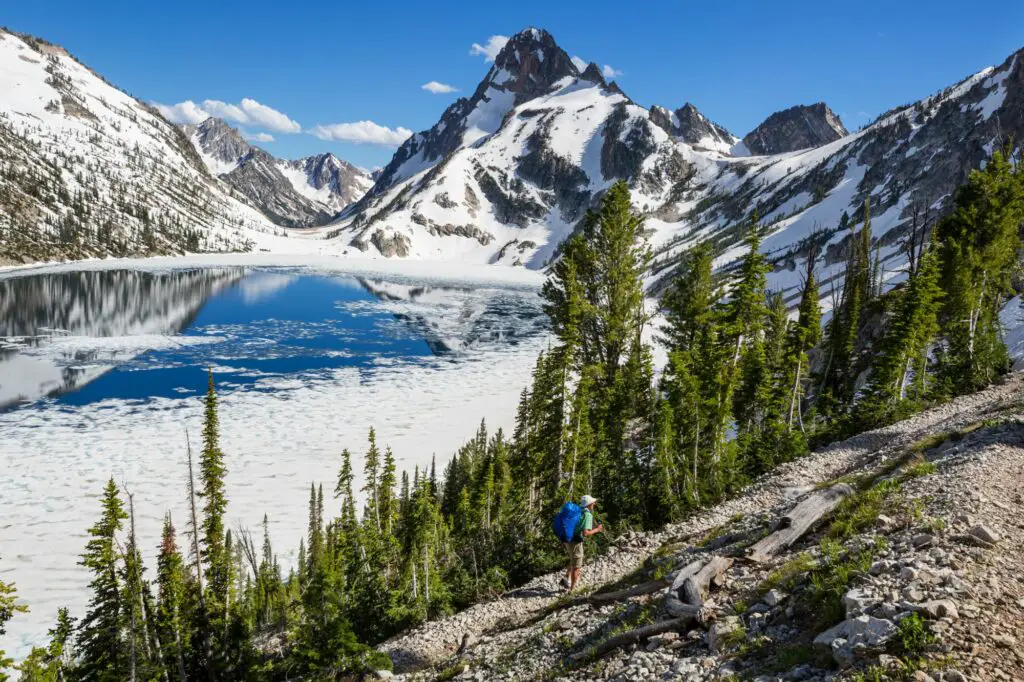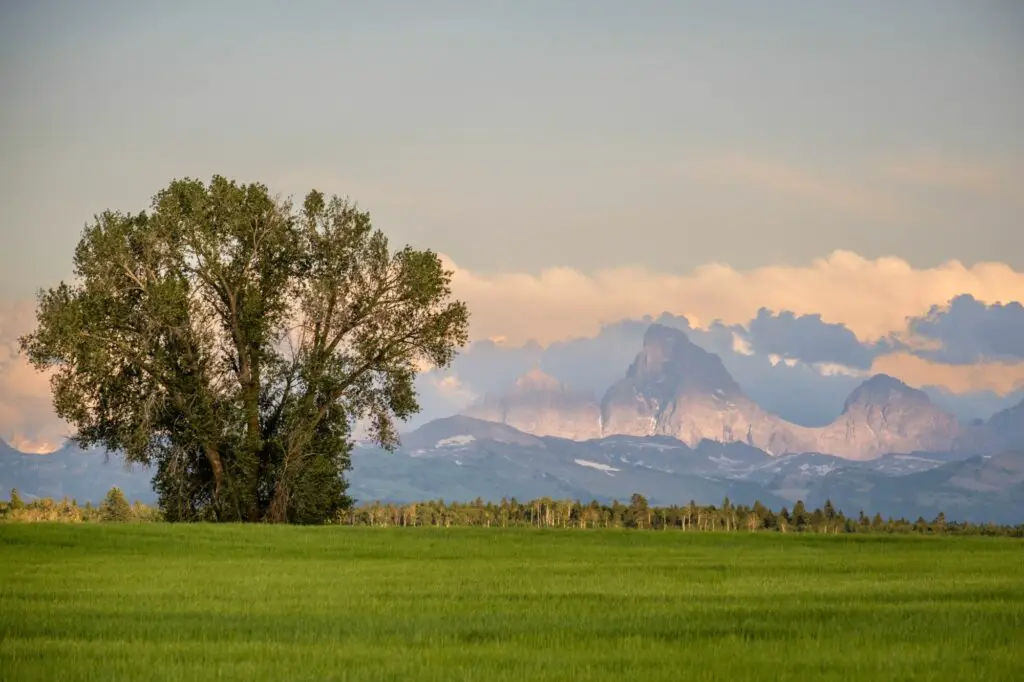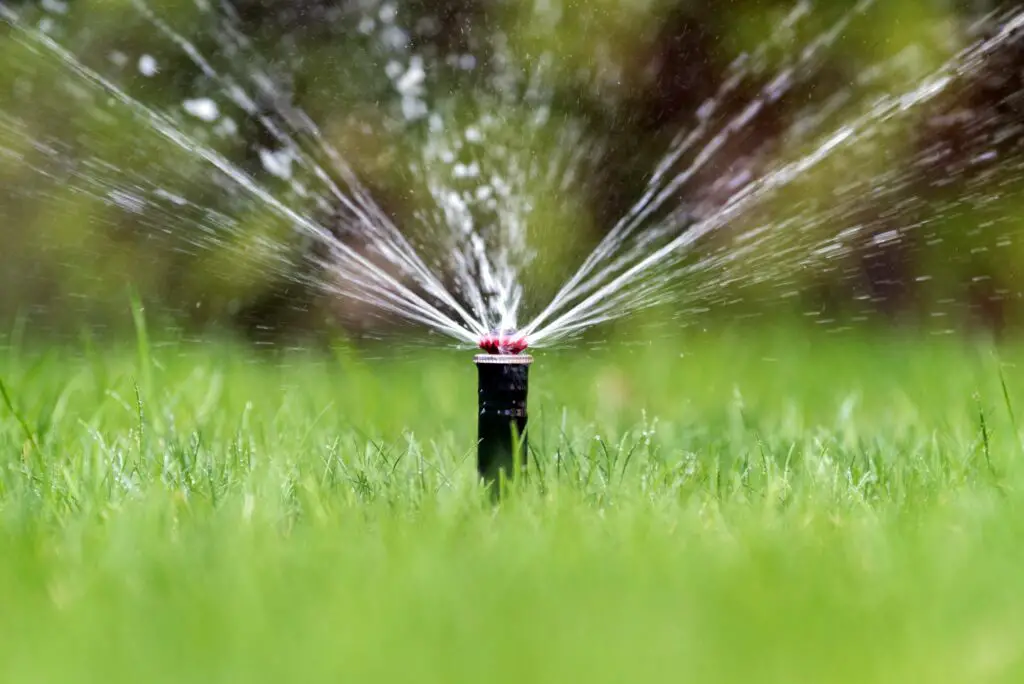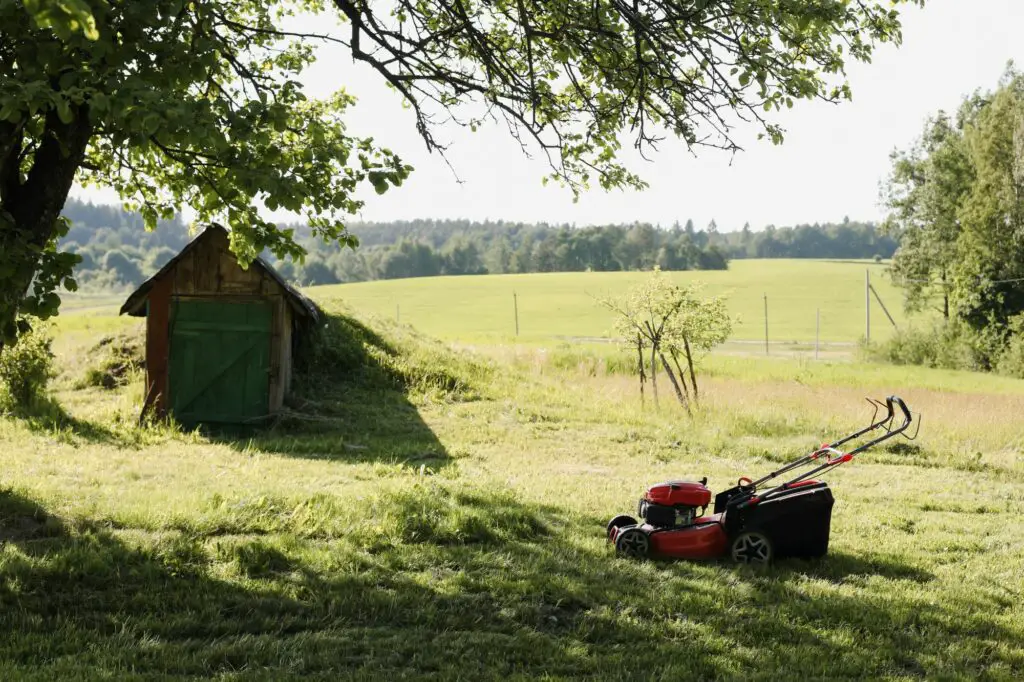Planting grass seed in Idaho is a task that requires careful consideration of several factors. From understanding the state’s climate to selecting the right type of grass, there are many things to keep in mind to ensure a successful lawn. Fortunately, with the right knowledge and planning, anyone can achieve a beautiful and healthy lawn in Idaho.
Idaho’s climate is characterized by cold winters and hot summers, which can make it challenging to grow grass. However, with the right type of grass and proper timing, it’s possible to create a lush lawn that can withstand the state’s weather conditions. There are several types of grass that are suitable for Idaho, including Kentucky bluegrass, tall fescue, fine fescue, and perennial ryegrass. Additionally, Buffalograss is a cold-hardy summer grass that can survive Idaho’s winters if planted in its southern lawns.
Key Takeaways
- Understanding Idaho’s climate and selecting the right type of grass are crucial for a successful lawn.
- Timing is essential when planting grass seed in Idaho, with late summer through fall being the best time.
- Proper watering, fertilizing, and maintenance are necessary to keep your Idaho lawn healthy and lush.
Learn more from related posts:
When to Plant Grass Seed in Maine?
When to Plant Grass Seed in Massachusetts?
When to Plant Grass Seed in Montana?

Understanding Idaho’s Climate
Idaho has a diverse climate with distinct regional differences. The state’s climate is influenced by its location in the western part of the United States, its proximity to the Pacific Ocean, and the presence of the Rocky Mountains. The northern region of Idaho is generally cooler and wetter than the southern part of the state.
The mountains in Idaho play a significant role in the state’s climate. The Rocky Mountains run through the eastern part of the state, while the Owyhee Mountains are located in the southwest. The mountain ranges affect the amount of precipitation that falls in different parts of the state. Areas on the windward side of the mountains receive more precipitation than those on the leeward side. The high elevations in the mountains also make the climate cooler.
Southern Idaho has a semi-arid climate, with hot summers and cold winters. The region receives less precipitation than the northern part of the state, which makes it more susceptible to drought. The Snake River Plain, which runs through southern Idaho, is a significant feature of the region’s climate. The plain creates a rain shadow effect, which means that areas to the east of the plain receive less precipitation than areas to the west.
Idaho’s climate can be extreme, with temperatures ranging from below freezing to over 100 degrees Fahrenheit. The state experiences cold winters, with snowfall common in many areas. The high elevations in the mountains can bring extreme temperatures and heavy snowfall. In contrast, the summers can be hot and dry, with temperatures reaching over 100 degrees Fahrenheit in some areas.
Types of Grass Suitable for Idaho
When it comes to choosing the right type of grass seed for Idaho, there are several factors to consider, such as the climate, soil type, and intended use. Idaho is known for its cool, dry climate, which means that cool-season grasses are the most suitable for the state.
Cool-Season Grasses
Cool-season grasses are well-suited for Idaho’s climate, as they can withstand the cold temperatures and dry conditions. Some of the most popular cool-season grasses for Idaho include:
- Kentucky Bluegrass: Kentucky bluegrass is a popular choice for homeowners in Idaho due to its fine texture and ability to repair itself. It is also cold-tolerant and can withstand the harsh winters in the state.
- Fine Fescue: Fine fescue is another cool-season grass that is well-suited for Idaho’s climate. It is drought-tolerant and can grow in a variety of soil types, making it a versatile choice for homeowners.
- Tall Fescue: Tall fescue is a hardy grass that can grow in a variety of conditions. It is drought-tolerant and can withstand heavy foot traffic, making it an ideal choice for high-traffic areas.
Warm-Season Grasses
While cool-season grasses are the most suitable for Idaho, warm-season grasses can also be grown in the state. However, they require more maintenance and are not as well-suited for the climate. Some of the most popular warm-season grasses for Idaho include:
- Bermuda Grass: Bermuda grass is a warm-season grass that is drought-tolerant and can grow in a variety of soil types. However, it requires more maintenance than cool-season grasses and is not as well-suited for the climate in Idaho.
- Zoysia Grass: Zoysia grass is another warm-season grass that can grow in Idaho. It is drought-tolerant and can withstand heavy foot traffic, making it an ideal choice for high-traffic areas. However, it requires more maintenance than cool-season grasses and is not as well-suited for the climate in Idaho.
- Buffalo Grass: Buffalo grass is a warm-season grass that is drought-tolerant and requires little maintenance. However, it is not as well-suited for the climate in Idaho and may not grow well in certain areas of the state.

Timing for Planting Grass Seed in Idaho
Planting grass seed in Idaho requires careful timing to ensure optimal growth and development. The ideal time to plant grass seed in Idaho is usually in late summer or early fall. During this time, the soil is still warm enough to encourage germination, and the cooler temperatures prevent the grass from being scorched by the summer heat.
Planting in late summer allows the grass to establish itself before the onset of winter, giving it a better chance of surviving the colder months. September is typically the best month for planting, although mid-August or the end of September may also work.
Planting in the spring gives the grass a longer growing season to get well established, but it also exposes it to problems like the summer heat and weeds. If planting in the spring, it is best to do so in May when the soil has warmed up enough to encourage germination.
When planting in the fall, it is important to do so early enough to allow the grass to establish itself before the first frost. If planting in late fall, it is best to do so at least six weeks before the first expected frost.
Grass Seed Planting Process
When planting grass seed in Idaho, it is important to follow a few steps to ensure the best results. Here is a brief overview of the grass seed planting process:
- Prepare the Soil: Before seeding, it is important to prepare the soil properly. Clear the area of any debris, rocks, or weeds. Loosen the soil with a rake or tiller to a depth of at least 2-3 inches. This will help the grass seed take root more easily.
- Seed the Area: Using a seed spreader, evenly distribute the grass seed over the prepared soil. Be sure to follow the recommended seeding rate for the specific type of grass you are planting. For overseeding, use half the recommended seeding rate.
- Rake the Seed: After seeding, use a rake to lightly cover the seed with soil. This will help protect the seed from birds and other animals, as well as provide better soil-to-seed contact.
- Water the Area: After planting, water the area thoroughly. Keep the soil moist but not waterlogged until the grass seed has germinated and established. This may take up to several weeks, depending on the type of grass.
- Maintenance: Once the grass has established, it is important to maintain it properly. This includes regular watering, mowing, and fertilizing. Be sure to follow the recommended maintenance schedule for the specific type of grass you have planted.

Watering and Fertilizing Schedule
After planting grass seed in Idaho, it is crucial to follow a proper watering and fertilizing schedule to ensure the growth and health of the new lawn. Proper watering and fertilizing will help the grass establish deep roots, which will help it withstand drought and other stresses.
Watering Schedule
Watering is critical to the success of a newly seeded lawn. The grass seed needs to be kept moist until it germinates, which usually takes 7-21 days. After germination, the grass should be watered deeply but infrequently to encourage deep root growth.
The amount of water needed will depend on the type of soil, grass, and weather conditions. In general, the grass should receive about 1 inch of water per week, either from rainfall or irrigation. It is recommended to water early in the morning or in the evening to reduce evaporation and water waste.
Fertilizing Schedule
Fertilizing is also essential to the growth and health of the new lawn. A soil test is recommended before fertilizing to determine the nutrient needs of the soil. In general, cool-season grasses in Idaho need 2-4 pounds of nitrogen per 1000 square feet per year.
It is recommended to fertilize the lawn in the fall, after the grass has been established for at least 6-8 weeks. This will help the grass store nutrients for the winter and promote healthy root growth. A second application of fertilizer can be applied in the spring, but it is not necessary if the lawn received adequate fertilization in the fall.
Irrigation Schedule
Irrigation is another critical aspect of a healthy lawn. It is recommended to irrigate the lawn deeply but infrequently to encourage deep root growth. The amount of irrigation needed will depend on the type of soil, grass, and weather conditions.
It is recommended to irrigate the lawn in the early morning or evening to reduce evaporation and water waste. It is also recommended to use a rain gauge or moisture meter to determine when the lawn needs to be irrigated. Over-irrigation can lead to shallow root growth and other problems.

Maintaining Your Idaho Lawn
Once you have planted your grass seed in Idaho, it is important to maintain your lawn properly to ensure it stays healthy and lush. Here are some tips for maintaining your Idaho lawn:
Mowing
Regular mowing is essential for keeping your lawn looking neat and tidy. Mow your lawn once a week during the growing season, but avoid mowing it too short, as this can damage the grass. The recommended mowing height for most grass types in Idaho is between 2.5 to 3.5 inches.
Weeds
Weeds can be a problem in any lawn, but there are ways to control them. Regularly pulling weeds by hand is one option, but using an herbicide can also be effective. Be sure to read the label carefully and follow the instructions when using an herbicide, as some can be harmful to pets and children.
Maintenance
Regular maintenance is key to keeping your lawn healthy. This includes fertilizing your lawn with nitrogen in the spring and fall, aerating your lawn in the fall, and overseeding your lawn in the spring or fall as needed.
Herbicide
If you need to use an herbicide to control weeds, be sure to choose one that is appropriate for your lawn type and follow the instructions carefully. Some herbicides can be harmful to pets and children, so be sure to keep them away from treated areas until the herbicide has dried.
Mowing Height
Mowing your lawn at the proper height is important for maintaining a healthy lawn. Most grass types in Idaho should be mowed between 2.5 to 3.5 inches to promote healthy growth and discourage weed growth.
Overseeding
Overseeding your lawn can help fill in bare spots and keep your lawn looking full and lush. Be sure to choose a grass type that is appropriate for your lawn and climate, and follow the instructions carefully when planting.
Nitrogen
Fertilizing your lawn with nitrogen is important for maintaining healthy growth. Apply nitrogen in the spring and fall, but be sure not to over-fertilize, as this can damage your lawn. Follow the instructions carefully when applying fertilizer to avoid burning your lawn.

Understanding Grass Traits
When planting grass seed in Idaho, it is important to understand the different traits of grasses to ensure optimal growth and maintenance. Here are some key traits to consider:
Soil Temperature and Germination
Grass seeds require a certain soil temperature to germinate. Cool-season grasses, such as fescue and Kentucky bluegrass, prefer soil temperatures between 50-65°F, while warm-season grasses, such as Bermuda and zoysia, prefer soil temperatures between 65-70°F. Planting grass seed when the soil is too cold or too hot can result in poor germination rates.
Tolerance to Shade and Sun
Different grass species have varying levels of tolerance to shade and full sun. For example, fine fescue and tall fescue are known for their shade tolerance, while Bermuda and zoysia require full sun. Homeowners should consider the amount of sunlight their lawn receives throughout the day to determine the best grass species for their lawn.
Drought Tolerance and Maintenance
Idaho experiences dry and hot summers, so selecting a grass species that is drought-tolerant and requires low maintenance is essential. Buffalograss and tall fescue are known for their drought tolerance, while Kentucky bluegrass requires more water.
Texture and Wear Resistance
Grass texture and wear resistance are important factors to consider for lawns with high foot traffic or play areas. Kentucky bluegrass and perennial ryegrass have a fine texture and are ideal for low-traffic areas, while tall fescue and Bermuda have a coarse texture and are better suited for high-traffic areas.
Disease Resistance and Self-Repair
Certain grass species, such as Kentucky bluegrass and tall fescue, have good disease resistance and can repair themselves, reducing the need for reseeding. Other grass species, such as bentgrass, are more susceptible to diseases and require more maintenance.
Frequently Asked Questions
What is the best time to plant grass seed in Idaho?
The best time to plant grass seed in Idaho is during the late summer or early fall. This is because the cooler temperatures and increased rainfall during these seasons provide the ideal conditions for seed germination and root development. Planting during the spring or summer months is not recommended as the high temperatures and dry conditions can make it difficult for the grass seed to establish itself.
What month is ideal for putting down grass seed in Idaho?
The ideal month for putting down grass seed in Idaho is typically August or September. This is when the soil is still warm enough for seed germination, but the temperatures are starting to cool down. It’s important to keep in mind that the exact timing may vary depending on the specific climate and weather conditions in your area.
How do you properly plant grass seed in Idaho?
To properly plant grass seed in Idaho, start by preparing the soil by removing any debris, rocks, or weeds. Then, loosen the soil to a depth of at least 6 inches and rake it smooth. Next, spread the grass seed evenly over the area, using a broadcast spreader or by hand. After spreading the seed, lightly rake it into the soil to ensure good seed-to-soil contact. Finally, water the area thoroughly, keeping the soil moist until the grass has fully established.
What are the recommended grasses for Idaho lawns?
The recommended grasses for Idaho lawns include Kentucky bluegrass, fine fescue, and perennial ryegrass. These grasses are well-suited to Idaho’s climate and soil conditions and can provide a lush, green lawn with proper care and maintenance.
When should I fertilize my lawn in Idaho?
It’s best to fertilize your lawn in Idaho during the fall months, typically in September or October. This is because the cooler temperatures and increased rainfall during this time of year provide the ideal conditions for grass growth and development. However, it’s important to follow the specific fertilization instructions for your chosen grass type and to avoid over-fertilizing, which can damage the lawn.
Is it better to plant grass seed in the spring or fall in Idaho?
It is generally better to plant grass seed in the fall in Idaho. This is because the cooler temperatures and increased rainfall during the fall provide the ideal conditions for seed germination and root development. Planting in the spring or summer can be more challenging due to the higher temperatures and dry conditions, which can make it difficult for the grass seed to establish itself.

Hey, I’m Lisa and I’ve been an avid gardener for over 30 years. I love writing, talking and living in the garden! Feel free to connect with me on my socials below


